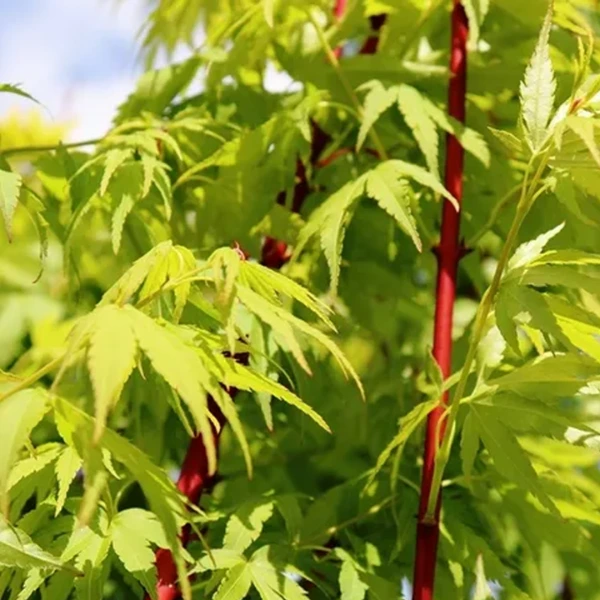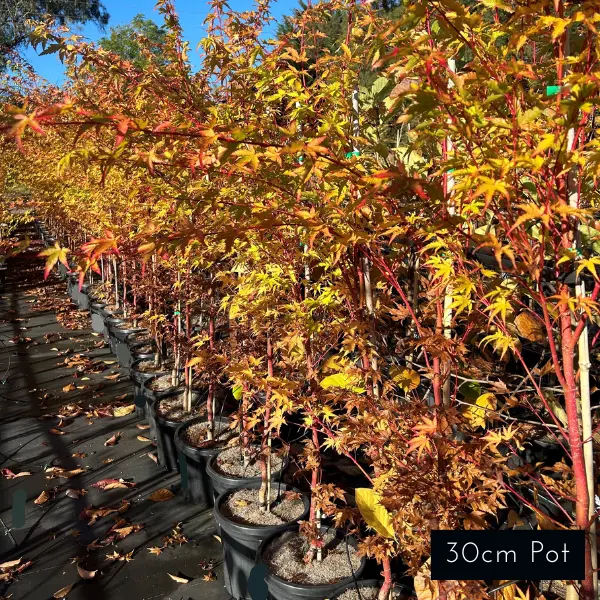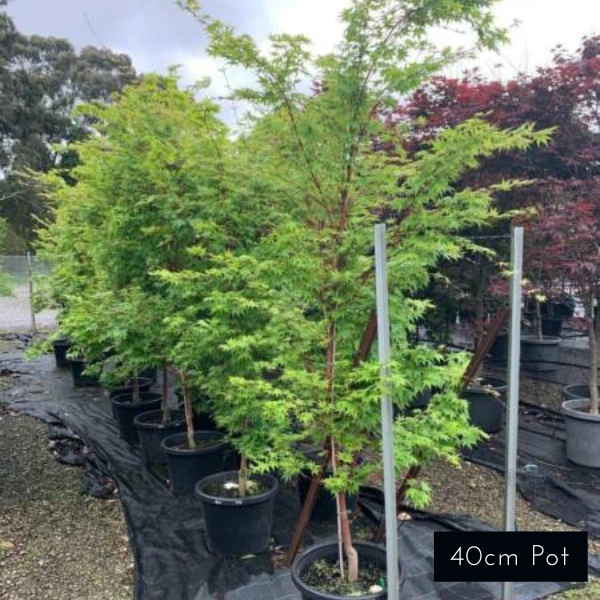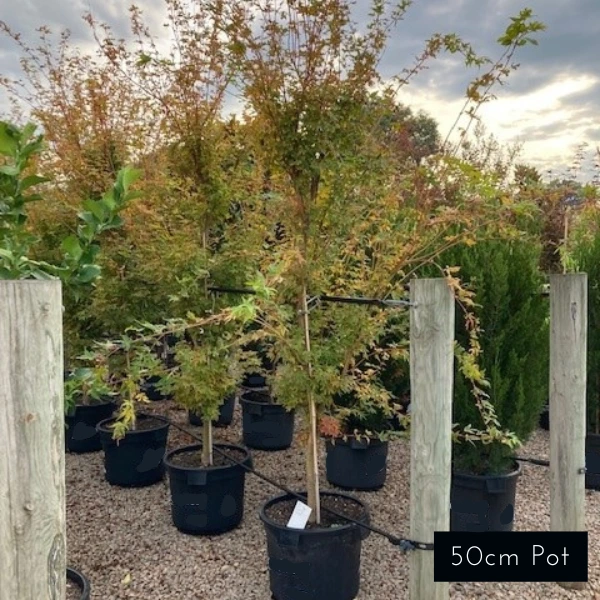Acer Palmatum Senkaki, or Coral Bark Maple, is a spectacular and ever-popular upright maple tree. It features fresh light green foliage that transitions to golden-yellow with hints of red in Autumn. However, its most striking feature is the brilliant coral-red bark, which intensifies in colour during the colder months. This tree offers year-round interest and is suitable for large planter pots, making it an ideal choice for those seeking a standout ornamental piece in their landscape.
Product Specifications
- Common Name: Coral Bark Maple, Senkaki
- Mature Height: 5-6 meters
- Mature Width: 4-5 meters
- Foliage: Light green leaves transitioning to golden-yellow with red hints in Autumn
- Form/Habit: Upright, vase-shaped form
- Uses: Ornamental feature / specimen tree
- Evergreen/Deciduous: Deciduous
- Soil: Range of soil conditions but best in well-draining soil
- Drought Hardy: Moderate
- Sun: Prefers full sun to partial shade; protection from harsh afternoon sun enhances foliage health
- Maintenance: Low, no pruning required unless you want to open up the shape to a canopy
- Planter Suitability: Yes
Commonly Asked Questions
Will the foliage on Senkaki change during Autumn?
The leaves on Senkaki maples will change from vibrant green to yellow / orange / red tones. Please note that colour change can differ from year to year; it will also depend on your plant’s health and the plants.
Are Senkaki Japanese Maples suitable for planter pots?
Yes, they are. Be sure to select a pot with plenty of room for the plant to grow; you may find the pot size needs to be increased in a few years. Please note that, like with all plants, they will grow quicker in the ground than in a pot; however if you have a small garden, courtyard, or paved area or are in a rental property, this can be a good thing, depending on your needs. Please ensure you use quality soil in your pot, slow-release fertilisers, and keep up the watering, as pots dry out more quickly than ground planting.
Do I need to prune my Japanese Maple?
There is no need to prune your Maple; just sit back and enjoy the glorious natural form of your Japanese Maple. Pruning can be effective if you want to open your Maple into a specific canopy shape. Otherwise, it’s best left alone to Mother Nature.






